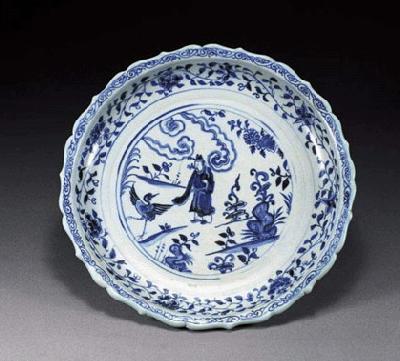| Art Q&A > Crafts |
|
|
Blue and White Porcelain of Yuan Dynasty
The Blue and White Porcelain of the Yuan Dynasty is large in size, with thick roughcast. Generally there are big bottle, big pot, big bowl and big plate, with the traditional flavor of the Tang (618-907) and Song (960-1279) dynasties. Due to the underdeveloped techniques, there are two interfaces on the body and several veins inside the body. The roughcast is not as smooth as that of the Ming and Qing Dynasties, while the glaze of the Blue and White Porcelain of the Yuan Dynasty is thicker than that of the Ming and Qing Dynasties, due to more iron in the raw material of the glaze.
There are lines like bamboo on the foot of the porcelain. The body is connected with the foot when glaze has not been coated. The body is decorated with lines of lotus, clouds and lots of flowers. Dense decoration was not only applied to the blue and white porcelain but also to the picture weaving and stone carving, reflecting the unique characteristics of that time.
The major producer of the Blue and White Porcelain in the Yuan Dynasty was Jingdezhen. Besides, there were kilns for the blue and white porcelain production in Zhejiang Province, east of China and Yunnan Province, southwest of China. |
||||
All rights reserved. Reproduction of text for non-commercial purposes is permitted provided that both the source and author are acknowledged and a notifying email is sent to us. |
||||
 |
